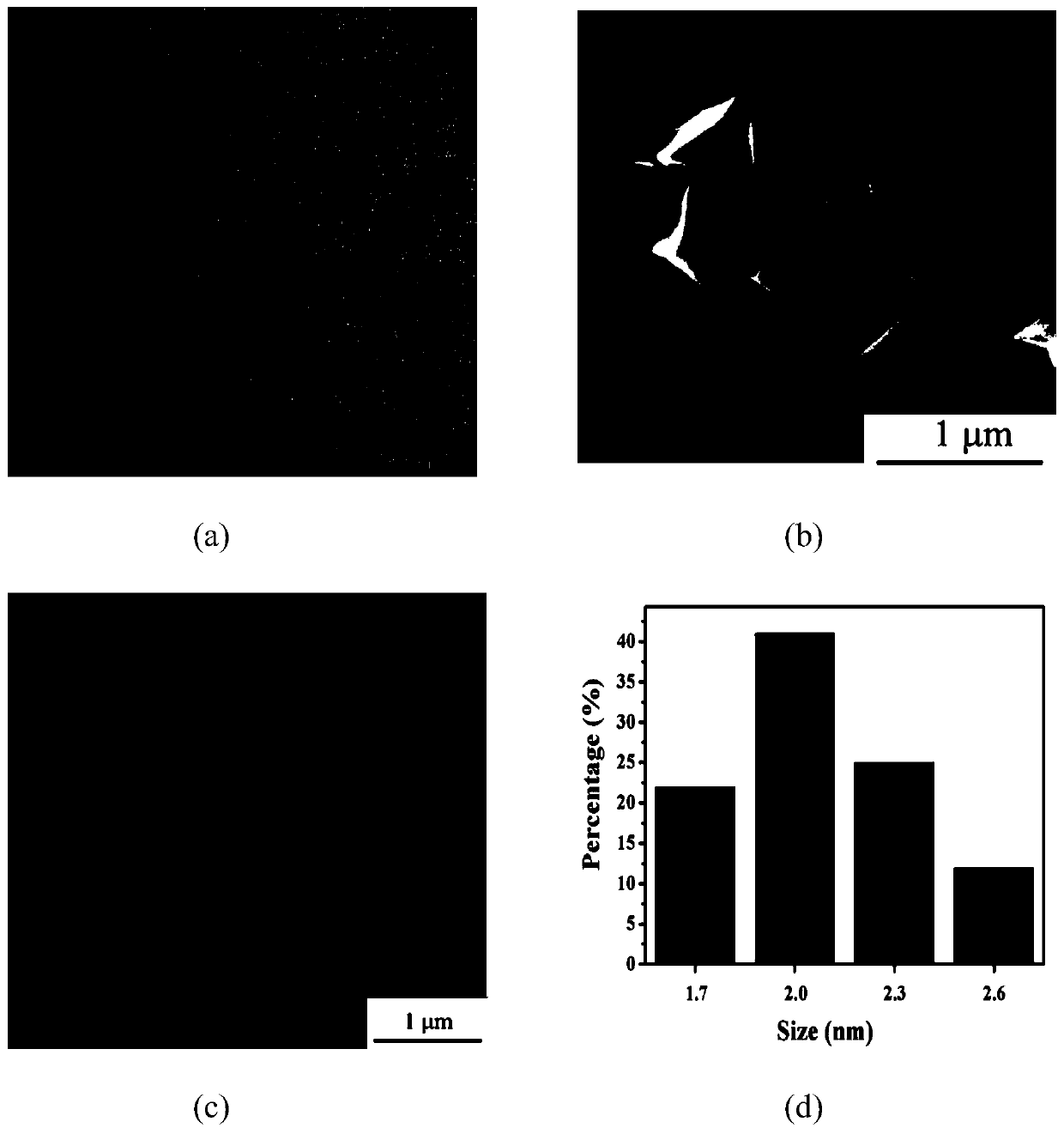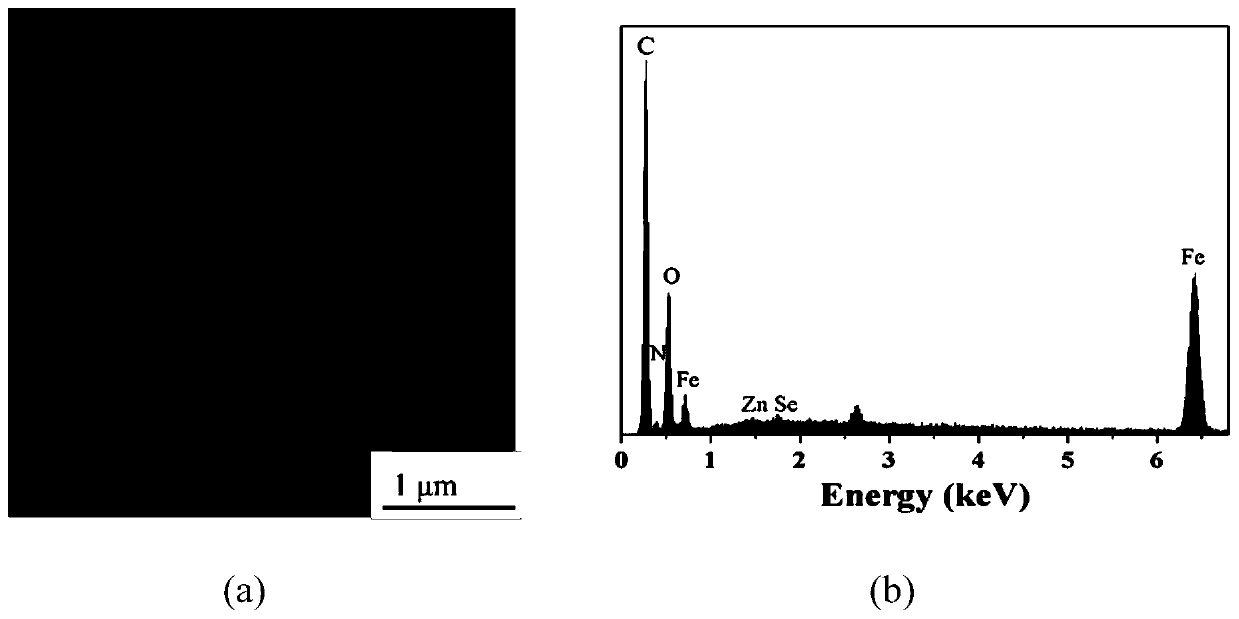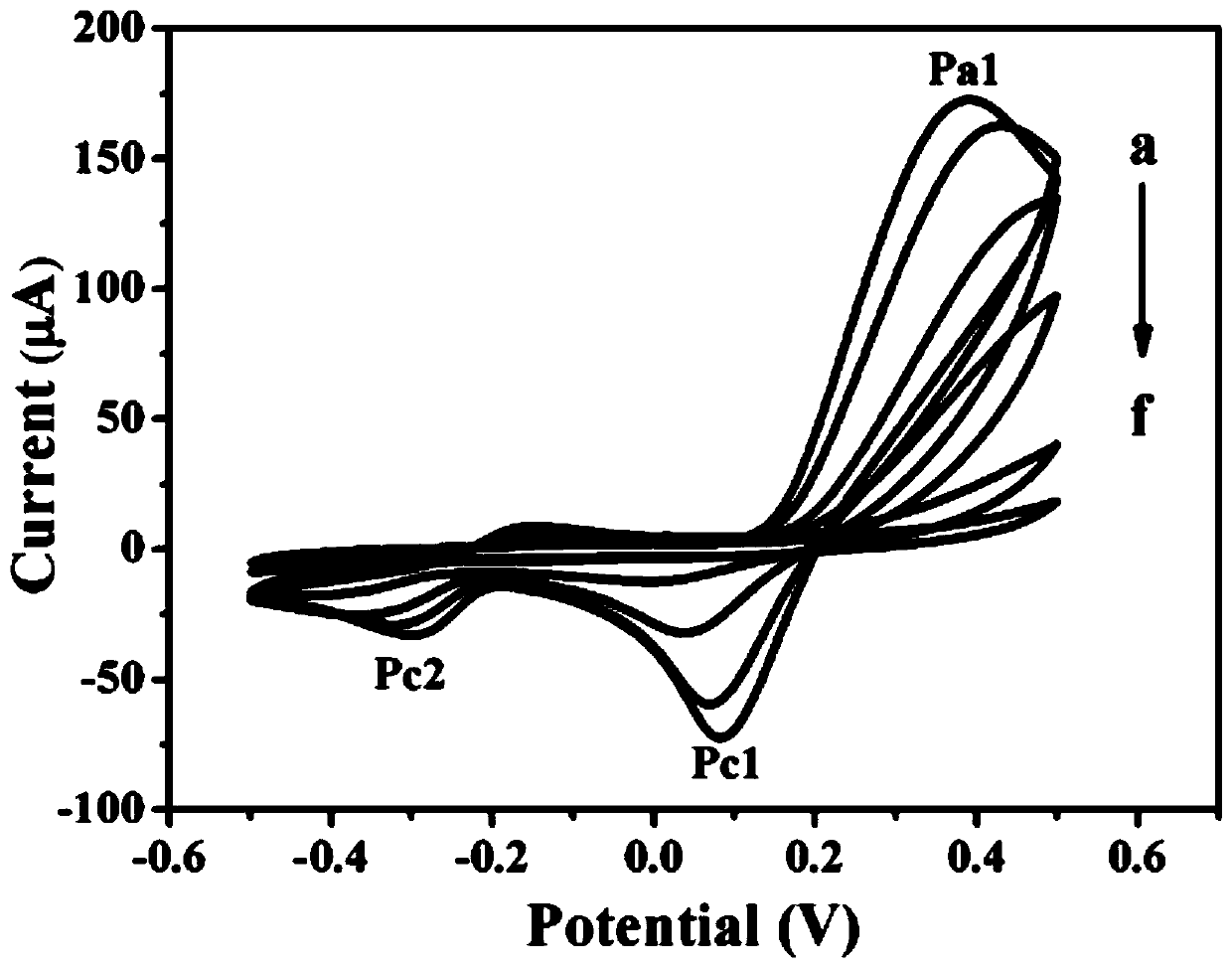Method for enhancing luminous intensity of squamous-cell carcinoma antigen during electrochemical luminescence detection
A squamous cell carcinoma and luminescent detection technology, which is applied in the direction of chemiluminescence/bioluminescence, analysis by making materials undergo chemical reactions, and measurement devices, can solve the problems of unfavorable rapid analysis, tedious, high-tech requirements, etc., and achieve improvement Electrochemiluminescent intensity, accelerated electron transfer rate, and good selectivity
- Summary
- Abstract
- Description
- Claims
- Application Information
AI Technical Summary
Problems solved by technology
Method used
Image
Examples
Embodiment 1
[0035] 1. Experimental method
[0036] 1.1 Reagents
[0037] Selenium powder (Aladdin Reagent Company); Sodium borohydride (Shanghai Tianlian Fine Chemical Co., Ltd.); 3-mercaptopropionic acid (MPA), 1-ethyl-3-(3-dimethylaminopropylcarbotriimide) ( EDC), polyvinylpyrrolidone (PVP), FeCl 3 ·6H 2 O, 2-aminoterephthalic acid (2-NH 2 -BDC), dopamine (DA) (Aladdin reagent company), zinc chloride, sodium hydroxide, disodium hydrogen phosphate, sodium dihydrogen phosphate, N,N-dimethylformamide (DMF), ethanol (Shantou West, Guangdong Long Chemical Industry Co., Ltd.); sodium lauryl sulfate, bovine serum albumin (BSA) (Beijing Suo Laibao Technology Co., Ltd.); acetic acid (Guangdong Guanghua Technology Co., Ltd.); squamous cell carcinoma antigen (SCCA), mouse anti-SCCA antibody, alpha-fetoprotein (AFP), CA15-3, carcinoembryonic antigen (CEA) (Beijing Boaosen Biotechnology Co., Ltd.).
[0038] 1.2 Instruments
[0039] MPI-B multi-parameter chemical analysis detection system (Xi'a...
experiment example 1
[0072] Experimental example 1: The method of the present invention is applied to the analysis of actual specimen samples In order to investigate whether the electrochemiluminescence sensor constructed by the present invention can be used for the analysis of complex samples, the applicant used the sensor to analyze human serum samples. The human serum samples came from the Fifth People’s Hospital of Guilin City, and were directly analyzed according to the aforementioned immunoassay method without any pretreatment. The RSD is less than 7%, indicating that the electrochemiluminescent sensor constructed in the present invention is suitable for complex biological sample analysis.
[0073] Table 2: Determination results and recovery rates of SCCA in human serum samples (n=3)
[0074]
PUM
| Property | Measurement | Unit |
|---|---|---|
| Concentration | aaaaa | aaaaa |
| Concentration | aaaaa | aaaaa |
| Concentration | aaaaa | aaaaa |
Abstract
Description
Claims
Application Information
 Login to View More
Login to View More - R&D
- Intellectual Property
- Life Sciences
- Materials
- Tech Scout
- Unparalleled Data Quality
- Higher Quality Content
- 60% Fewer Hallucinations
Browse by: Latest US Patents, China's latest patents, Technical Efficacy Thesaurus, Application Domain, Technology Topic, Popular Technical Reports.
© 2025 PatSnap. All rights reserved.Legal|Privacy policy|Modern Slavery Act Transparency Statement|Sitemap|About US| Contact US: help@patsnap.com



